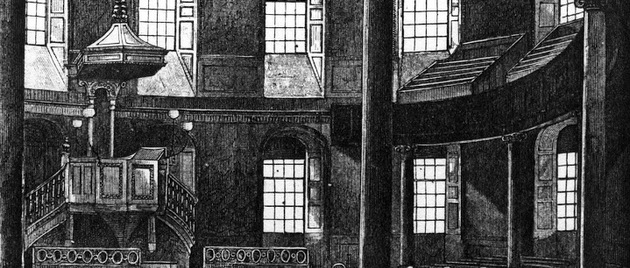history and heritage
St Andrew’s Church and the New Town of Edinburgh
St Andrew’s Church – now Edinburgh New Town Church – was the first church to be built in the Georgian New Town of Edinburgh.
The medieval boundaries of Edinburgh altered little until the draining of the Nor’ Loch, where Princes Street Gardens now are, which enabled the extension of the city to the North and the building of the New Town to the 1768 plan of James Craig.
Originally in Craig’s plan St Andrew’s Church occupied a prime site in St Andrew Square.
However, Sir Laurence Dundas, a wealthy businessman, moved quickly to acquire the prime site and built his mansion house there in 1774. Dundas House, his grand mansion, is now a head office of the Royal Bank of Scotland.
1784: St Andrew’s Church opens
St Andrew’s Church opened in December 1784. It was built by the Town Council of Edinburgh, to meet the needs of the incoming residents of the New Town. It was designed by Andrew Frazer, chief army engineer for Scotland, and chosen as the result of a competition.
In 1787 a spire was added, the Council having decided that a spire should be added to the original short tower. At that time the spire of 51m (168 feet) would have been the tallest building in the city and a very prominent landmark.
The Council also decided that there should be a “compleat Chyme” of bells and these were installed in 1789. A song, “Caller Herrin”, written in the first half of the 19th century is said to be based on the cries of the fishwives from Newhaven, on the coast to the north, and the peal of St Andrew’s Church bells.
The original interior had an imposing pulpit with a sweeping staircase and soundboard. All the seating was in box pews. All the windows would have been clear glazed.
There have been several changes and refurbishments of the interior over the years, the latest being completed in early 2013.
1814: St George’s Church opens
St George’s Church was also built by the Town Council and formed an integral part of the New Town. The foundation stone was laid in 1811 and the church was opened for worship in 1814. The architect was Robert Reid of Lowood.
Among its ministers was Andrew Thomson who was an eminent preacher, social reformer and musician and composed the psalm tune “St George’s Edinburgh”, Robert Candlish who became one of the leaders of the Free Church, and Archibald Scott, a pioneer in the movement leading to the re-union of the Kirk with the Free Church in 1929.
The 1843 Disruption
St Andrew’s Church was the scene of the Disruption of 1843, a major split in the Church of Scotland.
The present congregation
The present congregation of Edinburgh New Town Church is the result of several unions: with St Luke’s (also known as Queen Street) in 1947, with St George’s in 1964, with St George’s West in 2010 and Greenside in February 2024.


Spread the word